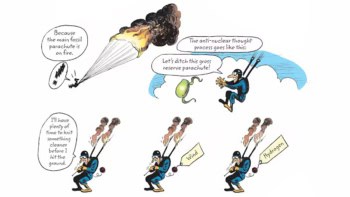
For many people in the northern hemisphere, the summer of 2018 was a taste of things to come. Record-breaking heatwaves occurred on all four continents, and electricity demand surged as people turned their air con to maximum. For energy suppliers the spikes in demand during warmer weather is a growing headache. Now a study shows that by the end of the century New Yorkers could demand as much as 80% more electricity on some days to keep themselves cool.
Currently summer air conditioning accounts for 9% of New York’s electricity consumption. Yet it is responsible for some of the biggest peaks in demand. Anticipating and preparing for these peaks – and working out how they might change in the future — is a key challenge for energy suppliers.
Luis Ortiz from The City College of New York, US, and colleagues combined a high-resolution (1 km) Weather Research and Forecasting model with a building energy model. The team calculated how energy demand from air conditioning is likely to change for a variety of urban environments under two global warming scenarios – RCP4.5, a stabilization scenario that results in around 1.8 °C warming by 2100, and RCP8.5, a high emissions scenario that brings an average temperature rise of roughly 3.7 °C by 2100.
Under RCP4.5, cooling demand increased by between 1 and 20%, while under RCP8.5 it rose as much as 80%. The largest increases in demand occurred on ‘cooler’ summer days – below the 50th percentile of cooling demand. This suggest that even “cool” summer days will be uncomfortable in future, and that air conditioning units are likely to run throughout the summer months.
“The increase in frequency of days above a comfortable temperature appears to be happening at a faster rate than the warm extremes are,” explains Ortiz, who published the findings in Environmental Research Letters (ERL).
The increased demand was not distributed evenly across the city. The largest projected increases were over low-rise and less densely populated boroughs, including Brooklyn, Queens and Staten Island; it takes proportionally more energy to cool a spacious mansion than it does to cool a high-rise apartment in Manhattan.
Ortiz and colleagues projected that maximum summer electricity demand for cooling across the whole city would increase by 5% by 2100 under RCP4.5 conditions and by 27% under RCP8.5.
Energy companies with plans to phase out old power stations or build new ones must take account of the expected day-to-day peaks in demand to ensure that their systems can cope and avoid energy brownouts and blackouts.
“We’re likely to see more ‘demand response’ programs, which incentivize users to reduce their energy use during particularly warm periods,” says Ortiz. Meanwhile, city authorities will need to ensure that all homes have access to adequate and efficient cooling systems, to ensure people can cope with the increased heat.
For New York these results are just the start of a journey to become more resilient to climate change. Other cities around the world are likely to follow suit, using similar modelling techniques to explore their vulnerabilities, and adopting mitigation measures to cope with the warmer summers ahead.



